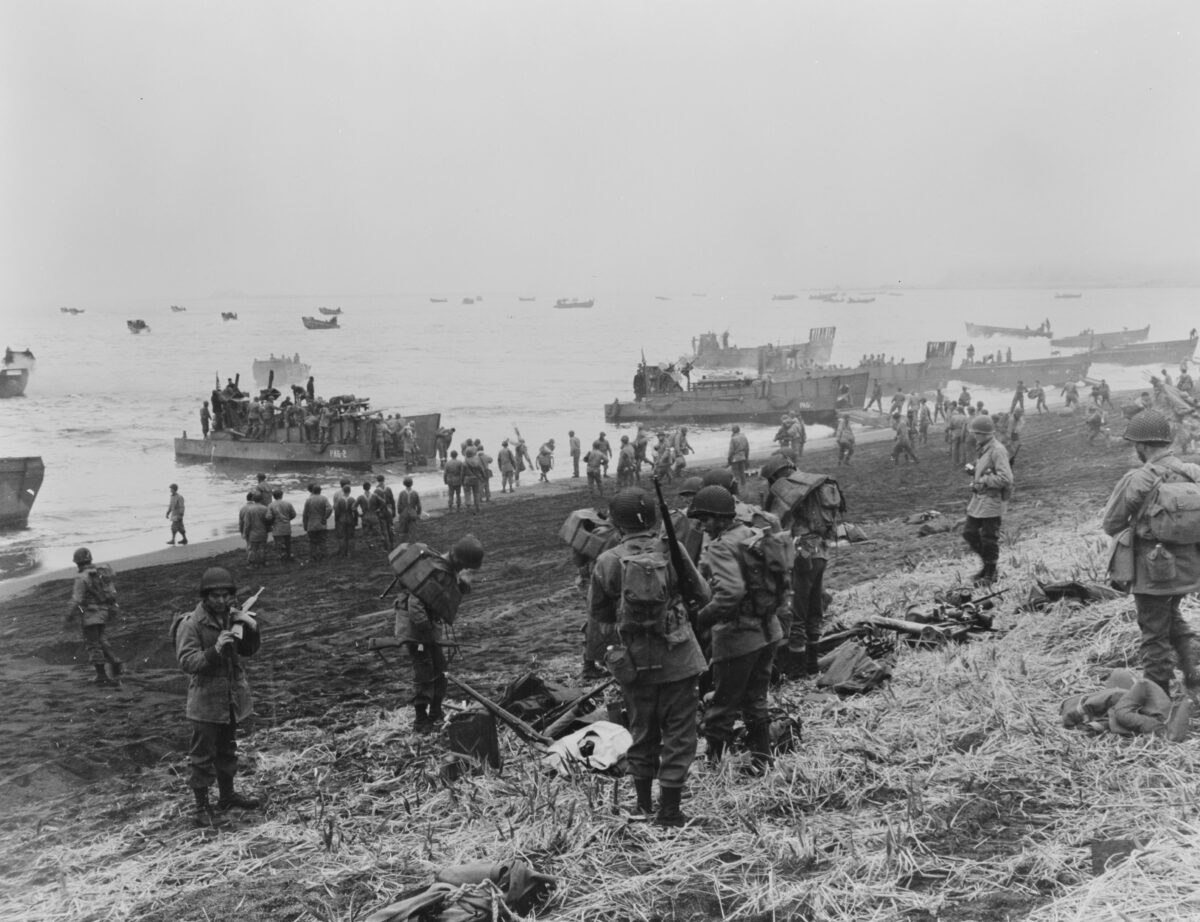On June 7, 1942, Major Matsutoshi Hozumi led some 1,200 men of the Japanese Army North Seas Detachment ashore on barren and perpetually fogbound Attu, the westernmost of Alaska’s Aleutian Islands. It was the first enemy force to occupy U.S. soil since the War of 1812. That unopposed landing and a similar sortie a day earlier against Kiska, 200 miles to the east, threatened the sea routes over which American aid flowed to Russia and secured Japan bases from which to advance on mainland Alaska or the U.S. West Coast. The Japanese landings also ultimately provoked one of the bloodiest and most challenging American military offensives of World War II.
While the speedy recapture of Attu and Kiska was of great psychological importance with regard to American public opinion, the United States was not able to consider reconquest of the Aleutians until the spring of 1943. Even then, preparations for Operation Sandcrab were uncoordinated. Planners focused on Attu, which they believed to be less heavily defended than Kiska. Tapped to undertake the assault was Maj. Gen. Albert E. Brown’s 7th Infantry Division, despite the fact it had spent months training for mechanized desert warfare. Even after being chosen, the division received minimal amphibious training and was unable to coordinate its training with supporting Navy and Army Air Forces units.
Logistical support also proved problematic. Troops and equipment embarking in San Francisco were packed haphazardly aboard too-small cargo vessels, and the absence of coherent load plans resulted in vital materiel being left behind. In what amounted to criminally poor judgment, planners decided troops would not need winter clothing for a mission expected to last just 36 hours; American soldiers were, therefore, sent to fight in subzero temperatures wearing thin leather boots and summer-weight uniforms.
The recapture of Attu commenced on May 11 with landings at Holtz Bay on the island’s north side and at Massacre Bay to the south. The Americans didn’t mount a preinvasion bombardment, yet the initial assault went uncontested by Colonel Yasuyo Yamasaki’s garrison of 2,300-plus men.
The initial lack of resistance was a godsend, as U.S. troops ran into difficulty from the outset. Inaccurate maps and foul weather played havoc with the amphibious operations; troops landed in the wrong places with the wrong equipment; vehicles bogged down or couldn’t climb the steep terrain; and the inadequate clothing quickly led to frostbite and trench-foot casualties.
When the Japanese did finally engage the advancing Americans, things went from bad to worse. Combat was fierce and often hand to hand, as defenders fought for every inch of ground. The slow pace of the American advance prompted Brown’s superiors to replace him on May 16 with Maj. Gen. Eugene M. Landrum, who fared only marginally better. Not until May 29 could Landrum order a final offensive against the remaining Japanese, who pre-empted the American assault by launching one of the first mass banzai charges of World War II.
By the time fighting on Attu ended on May 31, all but 29 of the Japanese defenders were dead. On the American side, 549 soldiers were killed, 1,148 were wounded and more than 2,000 were incapacitated by cold and disease. American casualties might well have been higher in an invasion of Kiska, but Japanese forces abandoned that island in mid-July.
Lessons:
■ Move quickly. The 14 months that elapsed between the Japanese occupation and the American landings gave the defenders time to dig in, resulting in higher U.S. casualties.
■ Know the terrain. Inaccurate maps and inadequate reconnaissance hampered the landings and confused the troops, who were unprepared for Attu’s rugged landscape.
■ Train with your friends. Scant preinvasion joint training led to confusion on the loading piers and landing beaches.
■ Look to the skies. Better weather forecasting would have allowed more effective Allied air and naval gunfire support.
■ Use the right force. Trained for desert warfare, the U.S. 7th Infantry Division wasn’t prepared for arctic combat.
■ Logistics matter. Inadequate clothing and disorganized supply operations degraded American combat effectiveness.
■ Expect the worst. American units unprepared for the May 29 banzai charge suffered needless casualties.
Originally published in the March 2009 issue of Military History. To subscribe, click here.





